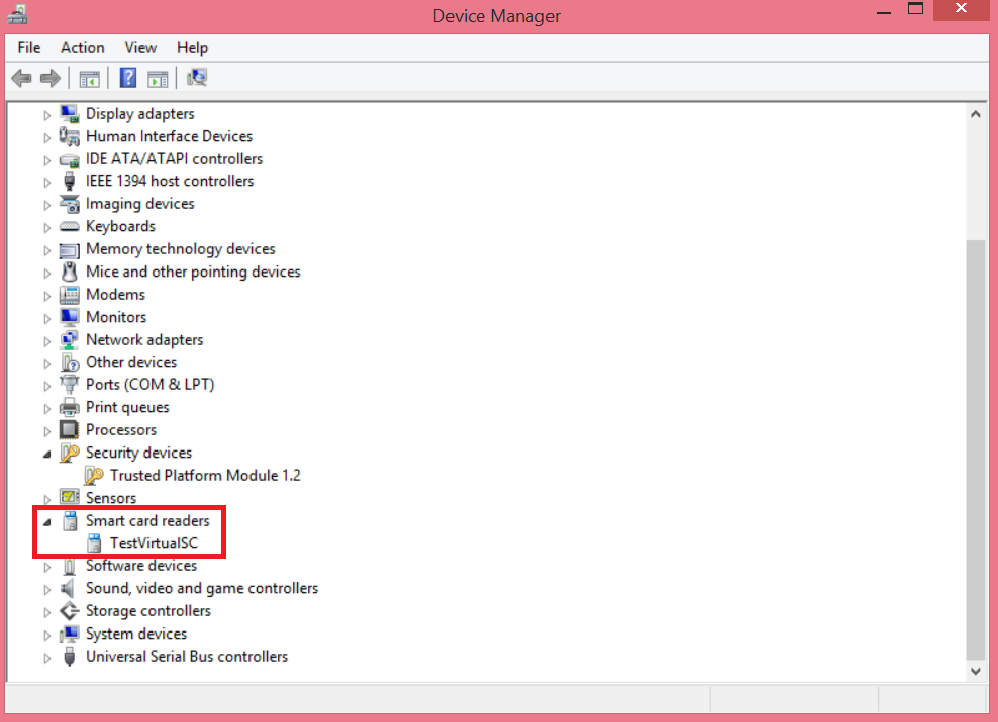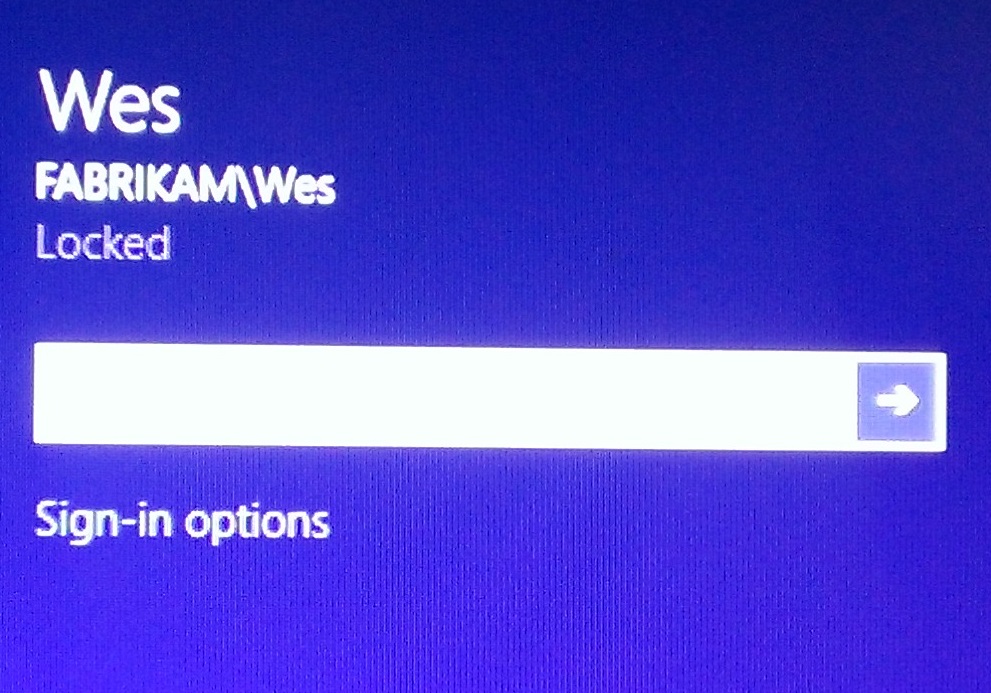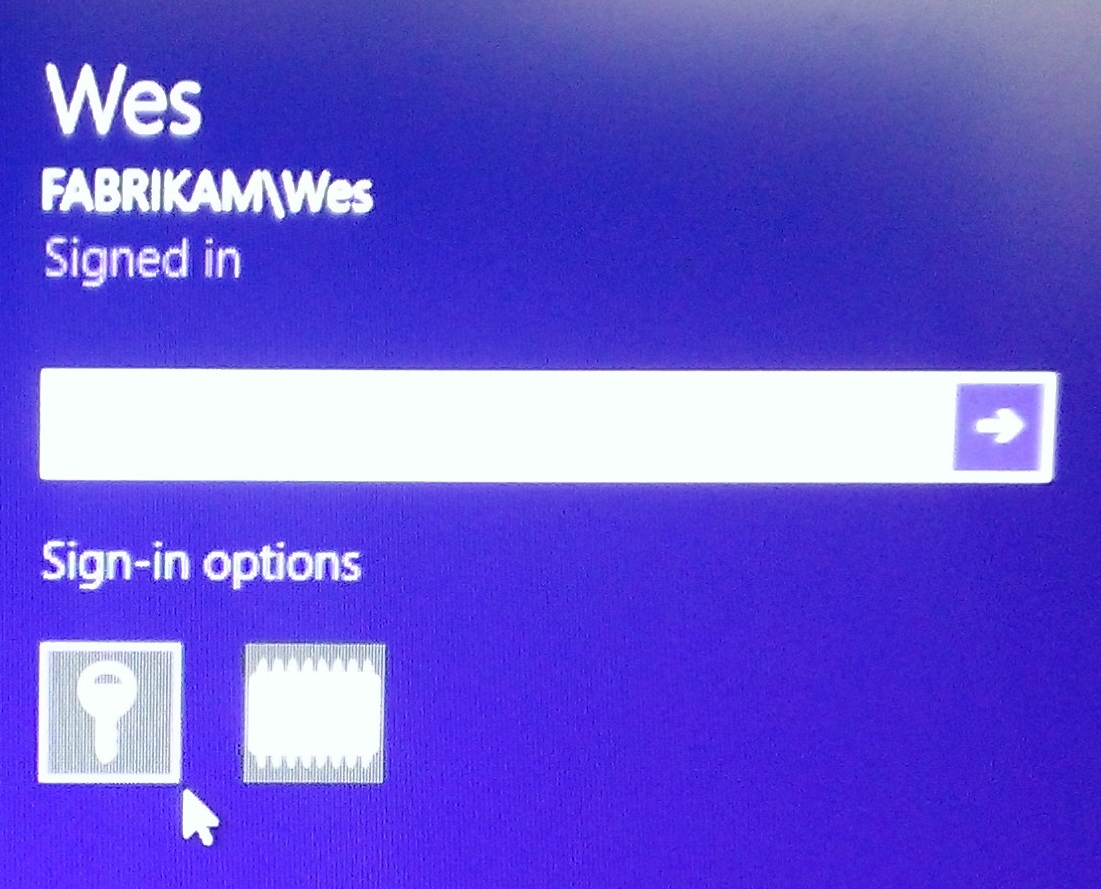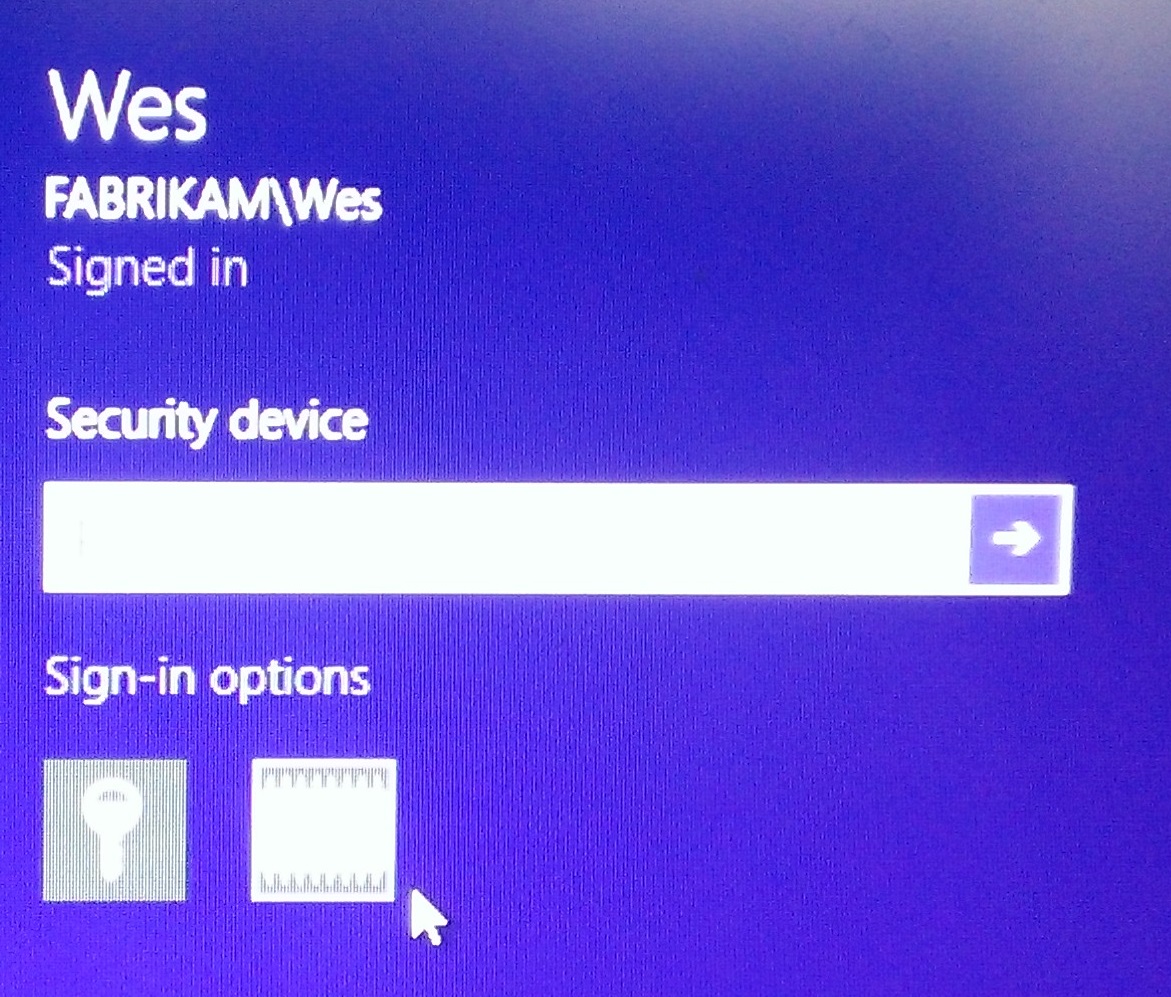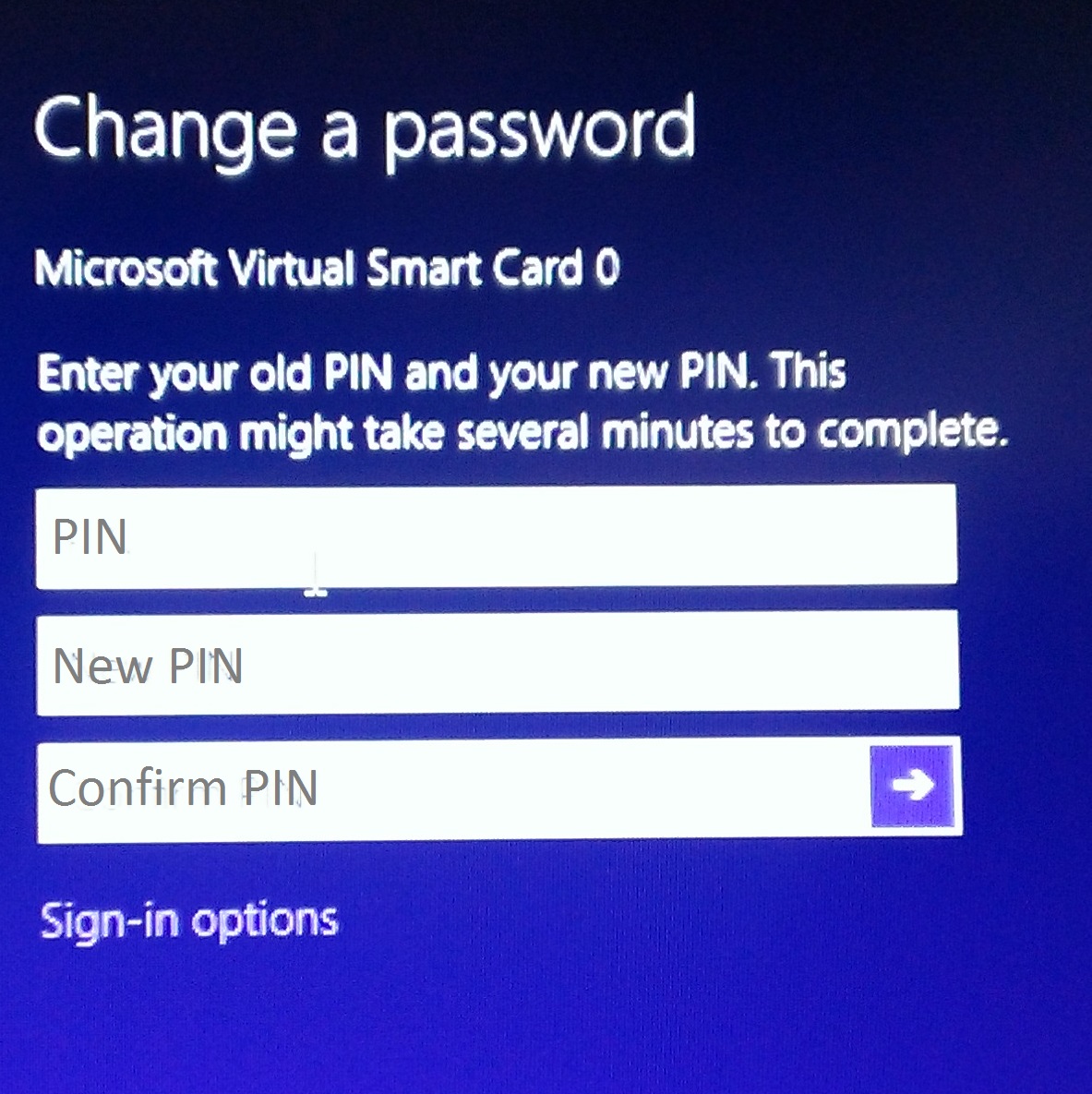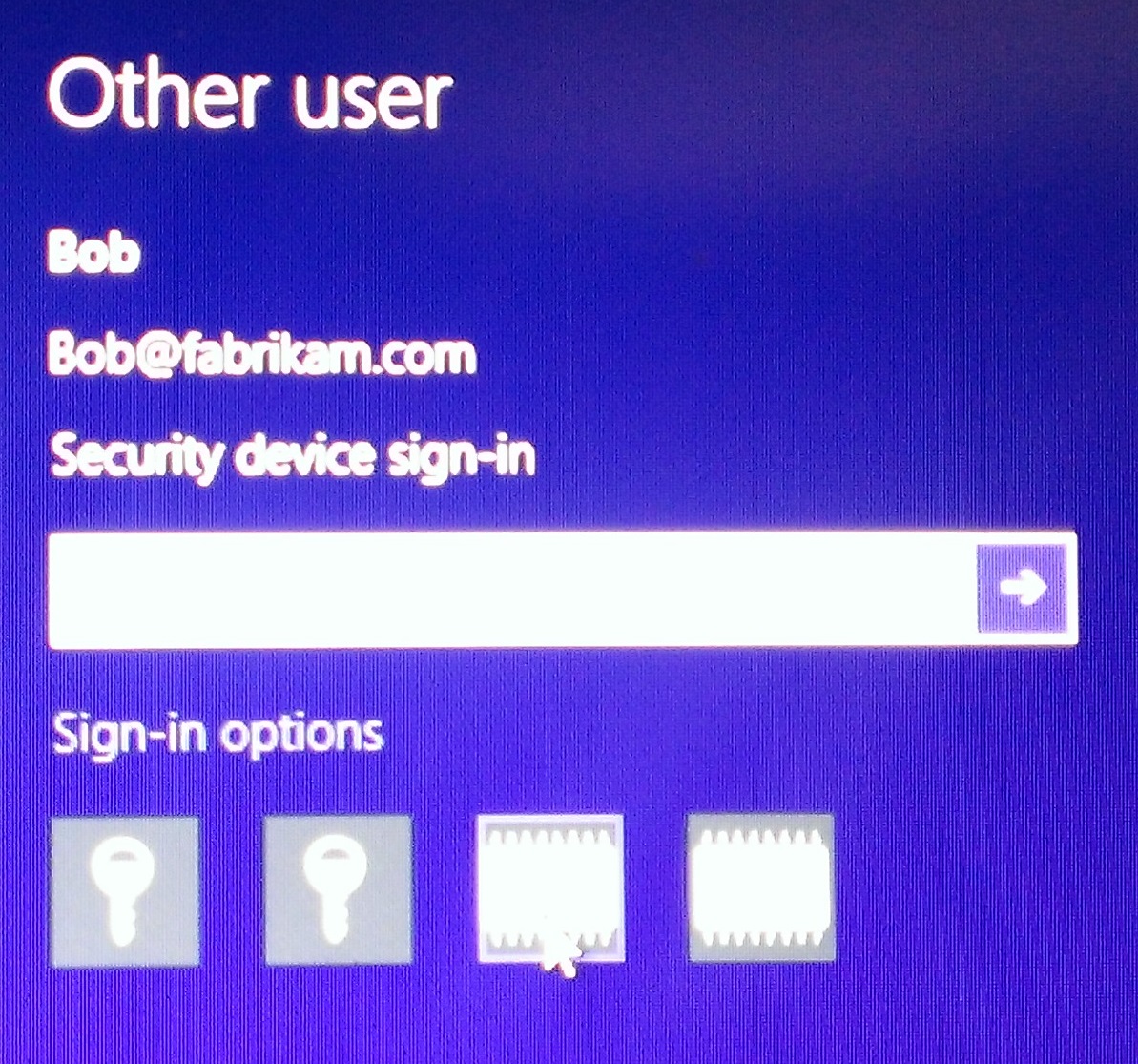Setting up TPM protected certificates using a Microsoft Certificate Authority - Part 2: Virtual Smart Cards
Hey Everyone, I am back with part 2 of this 3 part series on TPM protected certificates. The topics covered in this are related to Virtual Smart Cards, their benefits, and lastly their limitations. I will also cover how to create a Virtual Smart Cards. Management of certificates contained on the virtual smart card are similar to those of a traditional smart card are not covered in this article.
Virtual Smart Cards function very similarly to conventional Smart Cards. The difference is the private key is protected by the TPM and not the smart card media. The Virtual smart card emulates a smart card and reader so the device presents itself to operating system and applications as a traditional smart card. As for the storage of the private key, this is handled similarly to that of a key protected by the Microsoft Platform Crypto Provider. The private key is encrypted and stored on the file system.
Virtual Smart Cards offer the following similarities with traditional Smart Cards.
Non-Exportability: Since the private key is encrypted by the TPM is cannot be used on any other device.
Anti-Hammering: The TPM will lockout if a pin is entered incorrectly too many times. This behavior is manufacturer specific.
Key Isolation: Privatekeys protected by the TPM are never exposed to the operating system or malware. All private key operations are handled within the TPM.
For more information see the following related article:
TPM Fundamentals - https://technet.microsoft.com/en-us/library/jj889441.aspx
Lab Configuration
Assumptions
This article assumes the individual has a basic understanding of Microsoft PKI and its components.
Prerequisites
•A domain controller running Windows Server 2003 or later*
•An enterprise certificate authority running Windows Server 2012 R2
•A desktop or laptop with a configured TPM, running Windows 8.1
*In order to process Smart Card logons. Domain Controllers must obtain a certificate based on the Domain Controller Authentication certificate template.
Virtual Smart Card Creation
In this section we will create a virtual smart card on the Windows 8.1 laptop or laptop. Creating a virtual smartcard is not a difficult task however there are a few ways of doing it. The easiest method is using the command line utility TPMVSCMGR.EXE.
To create a virtual smartcard from the command line use the following command. Note: You must have admin rights on the host and the command line must be (run as admin).
Tpmvscmgr.exe create /name “TestVirtualSC” /pin prompt /adminkey default /generate
You should be prompted to enter a pin, enter a pin of your choosing then re-enter it to confirm.
Before we go further let’s take note of what this will actually do.
Create: This is pretty self-explanatory. We are creating a virtual smartcard here.
/name: This is the name that will be given to the device you will see in Device Manager (see below)
/pin: This is the pin that unlocks the virtual smart card. Similar to physical smartcard but protected by the TPM anti-hammering feature.
/adminkey: the admin key that you are assigning to the virtual smart card. Admin keys are used for management purposes.
After the virtual smartcard creation it can be treated just like a traditional smart card by using the “Microsoft Base Smart Card Crypto Provider” or “Microsoft Smart Card Key Storage Provider”.
Smart Card Logon Certificate Template
In this section we will create the certificate template to be used for smartcard logon. This template will be configured to leverage the “Microsoft Smart Card Key Storage Provider”. So unless a physical or Virtual Smart Card is present the user will not be able to enroll for this type of certificate. Before we get started I want to note a few things.
Creating this template will require Enterprise Admin rights unless you have delegated access to the templates by using one of the steps defined in this article: https://technet.microsoft.com/en-us/library/cc725621(v=WS.10).aspx
The template settings defined here should not be used in a production environment. Obtaining a certificate that can be used for smart card logon should not be easy. Processes should be put into place to ensure these types of certificates are procured in a secure manner (Issuance Policies), especially if they are to be used for non-repudiation. See the last section in this document “Further Considerations” for more info.
Now that this stuff is out of the way…
From the Enterprise Certificate Authority.
Open the Certificate Templates Console - certtmpl.msc,
Duplicate the Smartcard Logon certificate templates
On the Compatibility tab set the Certificate Authority to Windows Server 2012 and Certificate recipient to Windows 8.1/Windows Server 2012 R2
*Note: Windows 8.1 and Windows Server 2012 R2 are only required for key attestation. We will reuse this template in part 3 for this purpose. If your CA and client are Windows 8 and Windows Server 2012 you can still complete this exercise. If this is the case simply choose Windows 8/Windows Server 2012 in the compatibility settings.
Click on the General Tab and give the template a name.
Click on the Cryptography tab
Change the Provider Category to Key Storage Provider
Select Requests must use one of the following providers:
- Check the box for Microsoft Smart Card Key Storage Provider.
Click Apply and OK.
Open the Certificate Authority MMC – certsrv.msc
Right click on the Certificate Templates container and select new, certificate template to issue.
Click on the certificate template you created and click OK.
Enrolling for a Smart Card Logon Certificate
After your Virtual Smart Card and Smart Card Logon Template has been created now we are ready to enroll for a certificate.
Open CertMgr.msc
Right click on the Personal container -> all tasks -> Request New Certificate
Certificate Enrollment Wizard
On the “Before You Begin” page click Next
On the Select “Certificate Enrollment Policy” page Active Directory Enrollment Policy is the default. Click Next
Choose the certificate template you created by filling the checkbox to its left and click Enroll
Click Finish
That’s it. We now have a Virtual Smart Card and a certificate for Smart Card Logon. We are ready to use it to log in.
Logging In/User Experience
Before I get started on the next section. Sorry for the low res pictures :)
Now what we have everything we need to log in. What will your users see? Users will see the familiar interface but there will be a new link below: Sign-in options
Clicking on Sign-in options reveals the following.
The first is the icon that looks like a key, this is the username/password option. Do I need to explain this any further? I hope not.
This is the one we are interested in. The icon that looks like an IC or chip. Clicking on this changes the box above to state “Security Device” and the place you would typically put your password says PIN now. Hmmm…… where did I see that PIN before, oh yeah when we created the Virtual Smart Card. I hope you remember what you set it to. Enter the PIN you used when you created the Virtual Smart Card. Viola! Smart Card Logon.
Changing Virtual Smart Card PIN
In this last section I will show you how to change a PIN for a Virtual Smart Card.
While logged in using the Virtual Smart Card press Ctrl+Alt+Del and select the option to “Change a password”. Enter the old PIN, the new PIN then confirm. That’s it.
Further Considerations
Issuance Policy/Enrollment Requirements
It is important to give consideration as to why you are implementing Virtual Smart Cards. Most organizations choose to issue Smart Cards or Virtual Smart Cards to strengthen security. Smart card logon achieves this by requiring the user to have their physical smart card and the associated PIN in order to logon. Virtual Smart Cards are very similar. The user must have the TPM enabled device, and know the PIN.
Additional considerations should be given for enrollment for a virtual smart card. Much as that of traditional Smart Cards a username and password should not be the only factor to obtain one. Your organization may determine that someone needs to enroll in person and/or provide positive ID, fill out forms or other requirements.
Shared Devices/Computers
It is possible to have more than one Virtual Smart Card on a device. If you do have a requirement to have more than one the interface presents similar to what you see here:
User 1: Bob
User 2: Wes
I hope you all enjoyed this post on Virtual Smart Cards and I hope it assists you in your evaluation of this security related feature. Again, this is part 2 of a 3 part series regarding protecting certificate private keys using Trusted Platform Modules. I’ll be back really soon with part 3, Key Attestation in Windows Server 2012 R2 and Windows 8.1.
Technical Resources:
Understanding and Evaluating Virtual Smart Cards - https://technet.microsoft.com/en-us/library/dn578507.aspx
TPM Platform Crypto-Provider Toolkit - https://research.microsoft.com/en-us/downloads/74c45746-24ad-4cb7-ba4b-0c6df2f92d5d/default.aspx
Comments
- Anonymous
January 01, 2003
I have two Windows installed on the disk (as a VHD: Windows 8.1 and Windows 10), how to export Virtual smart card data from one OS and import to second one? All TPM PINs and data will be preserved. - Anonymous
January 01, 2003
thanks - Anonymous
January 01, 2003
I tried this myself in my lab and I am not able to import a certificate into the a Virtual Smartcard or into the TPM KSP. I am checking with the powers that be but I was not able to get it to work.- Anonymous
September 26, 2016
Hi. I am looking for an SME from Microsoft whom I could talk to regarding implementation of Two-Factor solutions for large enterprises.
- Anonymous
- Anonymous
January 01, 2003
Here are the requirements for smart card logon. Unfortunately smartcard logon does require a windows domain.
https://technet.microsoft.com/en-us/library/ff404294(v=ws.10).aspx - Anonymous
July 20, 2014
Can virtual smart cards survive reinstallation of the operating system? - Anonymous
July 25, 2014
Apologies for lack of blog postings. I’ve been having some problems with my posting account and - Anonymous
September 08, 2014
Hey Everyone, I am back with the last part of this 3 of this series on TPM protected certificates. The - Anonymous
September 11, 2014
@Harry: no they cannot. They can survive an OS upgrade however. - Anonymous
October 14, 2014
I am attempting to import a PKCS#12 file that has a key size of 1024 (I have also tried with key len of 2048) onto TPM 1.2. For the import I did try both exchange and signature which made no difference. I get an error SCARD_E_UNSUPPORTED_FEATURE.
Do you know if this is an unsupported feature? - Anonymous
October 17, 2014
The comment has been removed - Anonymous
December 22, 2014
The comment has been removed - Anonymous
April 30, 2015
Von der Sicherheit privater Schlüssel – oder verstecken Sie den Haustürschlüssel immer noch unter der - Anonymous
October 13, 2015
Virtual SmartCard got broken in Win10 :-/
In Win8.1 you could have two Virtual SmartCard with different PINs. In Win10 you can also have two Virtual SmartCards, but you can't install any certs in it, because when requesting a certificate you have to choose which Virtual Smart this cert goes to. Then you need to enter PIN for this SmartCard, but the field for PIN is not shown which makes Win10 unusable, when you want to create two Virtual SmartCards. - Anonymous
January 29, 2016
@Pavel - Could that have been one of the preview builds? It seems to be working fine in both the stable and current insider preview build release of Win10. Issues have cropped up when having third party middleware installed on the machine... Almost like there was an argument for control of the 'resources' for smart cards. Disabling the 3rd party middleware allowed me to connect.
VSC actually got in the way of being able to access a smart card applet supporting YubiKey... had to disable, exit, or uninstall the third party middleware AND disable VSC(s) in Device manager before things worked as expected. - Anonymous
August 02, 2016
Is it possible to be completed without CA ?- Anonymous
February 23, 2017
No, a CA is required.
- Anonymous
- Anonymous
March 26, 2017
The comment has been removed
